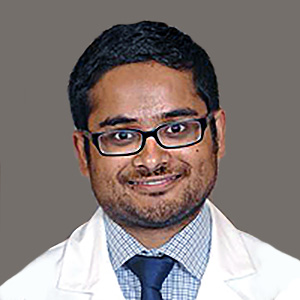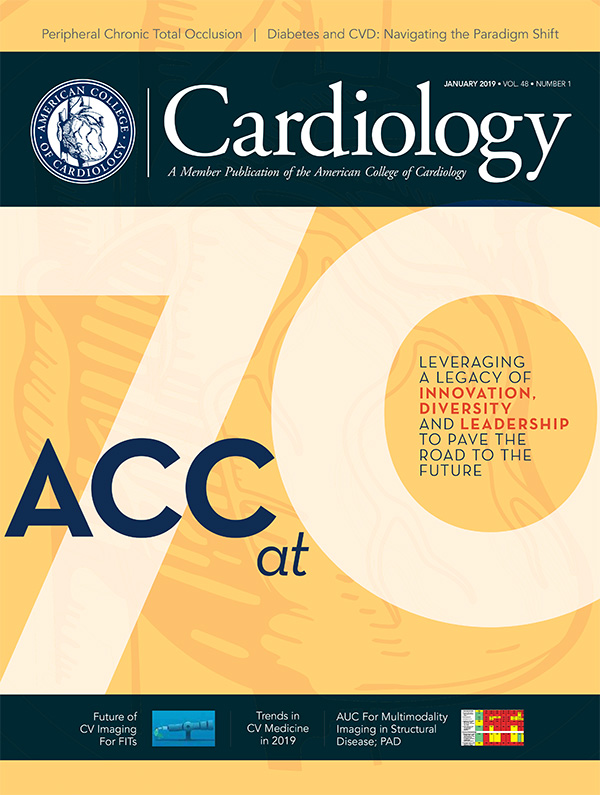For the FITs | The Future of Cardiovascular Imaging: Considerations for FITs
In the 21st century, the field of cardiovascular imaging is evolving at an accelerated pace. Significant advances in nuclear imaging, MRI, computed tomography (CT) and echocardiography have added to our armamentarium of improved testing to diagnose and treat heart disease.
In this article, I discuss the future of cardiovascular imaging from the view of a Fellow in Training and deliberate on several factors a cardiology fellow should keep in mind while considering a career in advanced imaging.
Future Trends in Cardiovascular Imaging
The future of cardiovascular diagnostics is trending towards noninvasive multimodalities. Advanced imaging protocols will provide safer (less radiation, less procedural complications) and cost-effective algorithms to diagnose obstructive, flow-limiting coronary artery lesions as an adjunct to invasive coronary angiography.
Advances in coronary CT angiography (CCTA) have led to high temporal resolution and excellent accuracy of detecting coronary artery stenosis. This technology will continue to improve and provide an alternative to invasive techniques to rapidly identify significant coronary lesions.
The virtual computation of fractional flow reserve (FFR) in atherosclerotic lesions detected in CCTA is leading to another emerging technology that complements CCTA – namely CCTA FFR. In the past, calculating FFR was limited to invasive coronary angiography.
However, with the above technologies, it is now possible to detect flow-limiting coronary lesions with noninvasive techniques. In turn, it allows for referral of a select population of patients for invasive coronary angiography in case of failure of maximal medical therapy.
Advanced cardiac imaging is and will remain an integral part of structural heart programs. An imaging specialist is a requisite member of the "valve team" especially in dealing with more complex valvular pathologies. Transcatheter aortic valve replacement (TAVR) is all but impossible without the use of cardiac CT and transesophageal echocardiography (TEE).
Similarly, transcatheter mitral valve interventions and left atrial appendage closure is performed by teams consisting of an expert echocardiographer with particular expertise in TEE. In the future, 3D, 4D and intracardiac echocardiography will be mainstream in the diagnosis of disease as well as support during cardiovascular procedures and surgeries.
Cardiac magnetic resonance (CMR) attracts a significant portion of advanced imaging trainees. It not only is the gold standard modality in measuring left ventricular ejection fraction but also allows myocardial viability and scar quantification.
Another critical area of interest is the utilization of CMR in the electrophysiology lab through a combination of CMR images with voltage maps to gain a comprehensible understanding of scar tissue in the underlying myocardium, which in turn, would allow for more efficient ablation of ventricular arrhythmias. In the future, novel algorithms will enable cardiac MRI to be faster and more efficient in identifying structural myocardial, valvular and coronary pathologies.
Advanced Imaging Fellowship
A general cardiology fellowship does not provide sufficient time to train an individual in all advanced imaging modalities. Thus, there has been more demand in an additional one to two years of training after a general fellowship to focus on a combination of echo/nuclear-PET/CT/CMR. Institutions in the U.S. and around the world support this additional advanced cardiac imaging fellowship for those interested in further training.
The ACC maintains an online database of fellowships. After this fellowship, the trainee can practice as a noninvasive cardiologist with a unique niche in advanced imaging modalities. Both academic and private institutions have positions available for advanced imaging specialists. Typically, posts are limited to larger tertiary institutions due to the high costs associated with running CMR and PET scanners.
Considerations For FITs
The future of medicine is in flux. With the constant innovation and development of novel therapeutics, the landscape of cardiovascular medicine is changing. Payment models are also changing. As a result, compensation for cardiovascular procedures has plummeted. Furthermore, multimodality imaging is an expensive endeavor. Each cardiac MRI scan can cost between $1000-5000 or on average 5.5-times the price of echocardiography. PET scans cost on average 14-times that of echocardiography.
However, in comparison, the fee of invasive coronary angiography is 20-times the cost of echocardiography. Cost of CMR and cardiac CT needs to be reduced further before mainstream acceptance for daily use. Furthermore, there is no standardized accreditation body overseeing the training. However, this may change as the fellowships around the country become more established.
Conclusions
As the field evolves over the next decade, we will see many changes to the advanced imaging fellowship training model. With further technological advances, cardiovascular imaging will continue to take a strong foothold into diagnostics and therapeutics of heart disease. FITs should consider the various career paths within advanced imaging as they proceed through their general training.

This article was authored by Narayana Sarma V. Singam, MD, a Fellow in Training at the University of Louisville in Louisville, KY.
Clinical Topics: Arrhythmias and Clinical EP, Cardiac Surgery, Invasive Cardiovascular Angiography and Intervention, Noninvasive Imaging, Implantable Devices, SCD/Ventricular Arrhythmias, Atrial Fibrillation/Supraventricular Arrhythmias, Cardiac Surgery and Arrhythmias, Interventions and Imaging, Angiography, Computed Tomography, Echocardiography/Ultrasound, Magnetic Resonance Imaging, Nuclear Imaging
Keywords: ACC Publications, Cardiology Magazine, Transcatheter Aortic Valve Replacement, Fellowships and Scholarships, Coronary Angiography, Positron-Emission Tomography, Tomography, Emission-Computed, Echocardiography, Transesophageal, Mitral Valve, Coronary Vessels, Atrial Appendage, Tomography, X-Ray Computed, Stroke Volume, Cicatrix, Magnetic Resonance Imaging, Multimodal Imaging, Multimodal Imaging, Myocardium, Algorithms, Referral and Consultation, Referral and Consultation, Coronary Stenosis, Magnetic Resonance Spectroscopy, Positron-Emission Tomography, Specialization, Arrhythmias, Cardiac, Electrophysiology, Accreditation, Heart Diseases, Diagnostic Imaging
< Back to Listings

